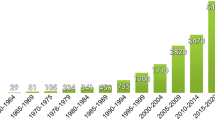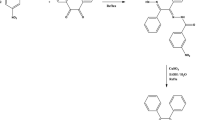Abstract
A SMALL portion of the spectrum of oxide of lanthanum has been known for some time. The most notable of the old measurements (v. Kayser, “Handbuch der Spektroscopie”, Bd. 5, p. 666, Leipzig, 1910) refer to two groups of bands in the violet at λ4418 and λ4372, and to a pair of bands in the green at λ5600 and λ5626.
Similar content being viewed by others
Article PDF
Author information
Authors and Affiliations
Rights and permissions
About this article
Cite this article
PICCARDI, G. New Bands in the Spectrum of Oxide of Lanthanum. Nature 124, 129 (1929). https://doi.org/10.1038/124129c0
Issue Date:
DOI: https://doi.org/10.1038/124129c0
Comments
By submitting a comment you agree to abide by our Terms and Community Guidelines. If you find something abusive or that does not comply with our terms or guidelines please flag it as inappropriate.



